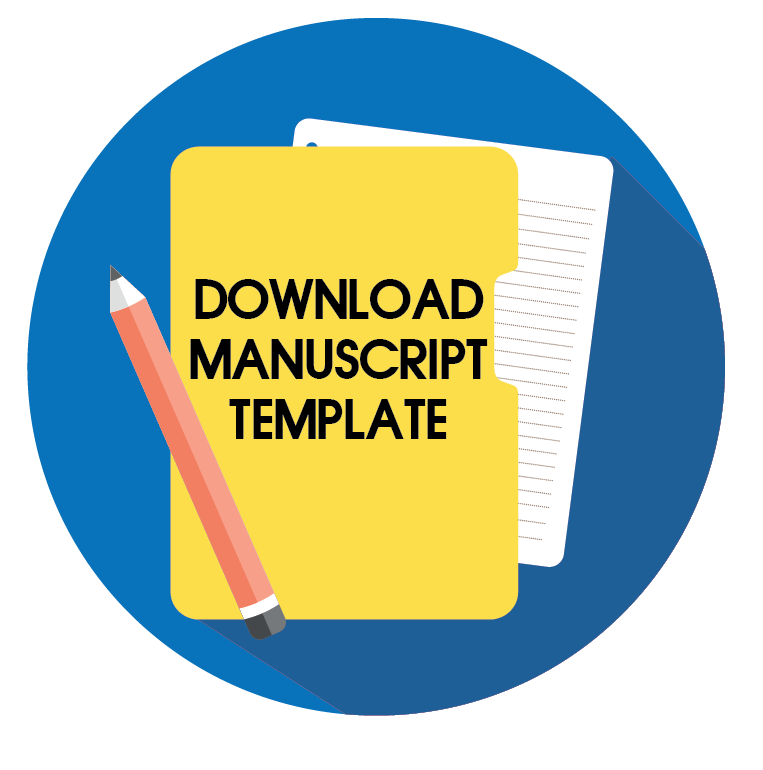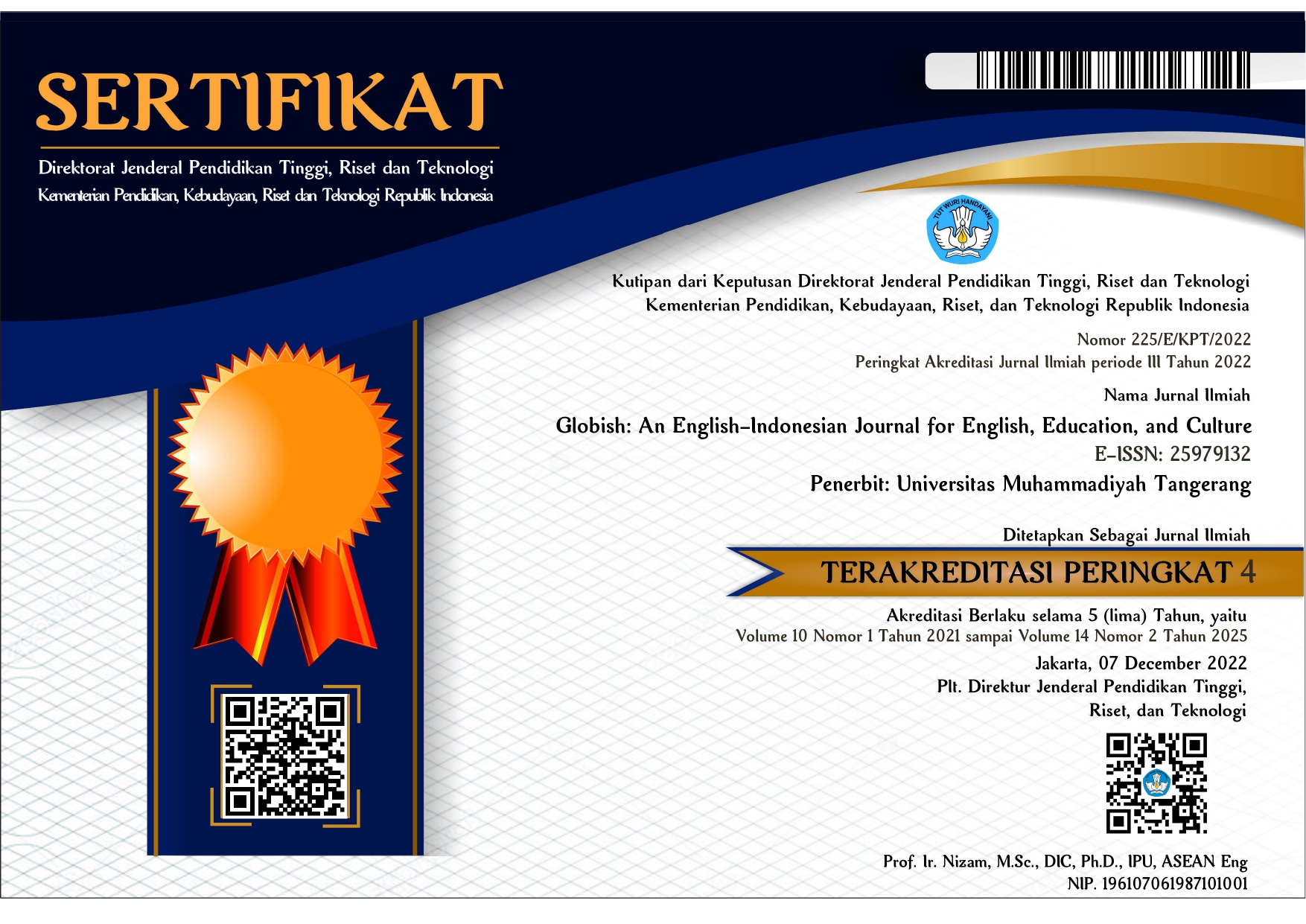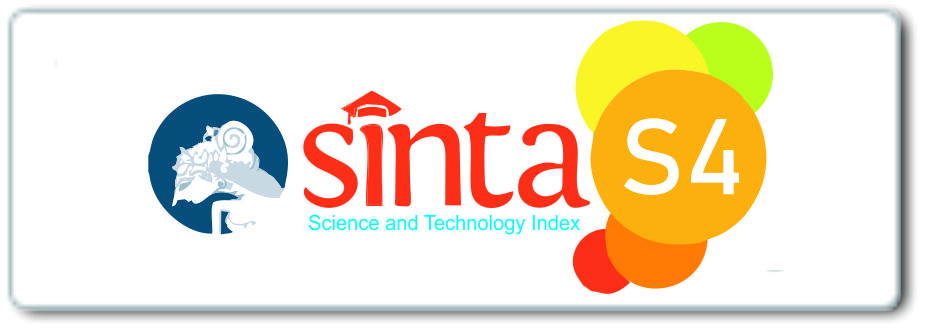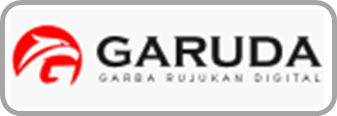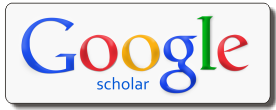Promoting Harmony in Communication: The Role of Inclusive Language in Enhancing Equility and Equity in Digital Platforms
Abstract
This research aims to enrich academic discourse on inclusive language by exploring its role in creating harmony in digital communication through the use of shared, non-offensive and accommodating language. This research uses a descriptive qualitative method with a case study approach. Triangulation was carried out to identify consistency of data from various sources, thereby increasing the validity of the findings. Data collection methods include interviews, focus group discussions (FGD) with 10 colleagues who have visual impairments, observation, and documentation. As researchers with visual impairments, researchers have a significant role in assessing the accessibility of social media, news platforms, and public service media for users with screen readers. The research results show that common language has been implemented well in various digital communication media. Recommendations for significant improvements were emphasized, especially in the use of accommodating language for accessibility features in news media. It is hoped that the practical implications of this research can provide recommendations to the government and policy makers in managing social media, news media and public service media, to create policies and technical guidelines for implementing a common, accommodating and non-offensive language. These findings will benefit not only individuals with visual impairments, but also people with other disabilities as well as non-disabled individuals, by ensuring inclusive communication for all.
Keywords
Full Text:
PDFReferences
"Alasan Belum Optimalnya Pendidikan Inklusif di Indonesia Menurut Dosen Universitas Trunojoyo Madura," Liputan6, 13 Mar. 2023. Accessed: 20 November 2024. [Online]. Available: https://www.liputan6.com/disabilitas/read/5230744/alasan-belum-optimalnya-pendidikan-inklusif-di-indonesia-menurut-dosen-universitas-trunojoyo-madura
"Beranda," Monitoring-SIASN BKN, Accessed: 20 November 2024. [Online]. available: https://monitoring-siasn.bkn.go.id/
"Daftar," BKN Lapor, Diakses 24 November 2024. [Online]. available: https://www.lapor.go.id/account/register
"Daftar," Kemdikbud Lapor, Accessed: 24 November 2024. [Online]. available: https://kemdikbud.lapor.go.id/account/register
"Daftar," Kemenkes Lapor, Diakses 24 November 2024. [Online]. available: https://www.lapor.go.id/account/register
"Keren! Wanita Disabilitas Ini Jago Melukis Rantang Cantik," Detik Food, 15 Nov. 2024. Accessed: 20 November 2024. [Online]. available: https://food.detik.com/info-kuliner/d-7640394/keren-wanita-disabilitas-ini-jago-melukis-rantang-cantik
"Menakar arah inklusi bagi penyandang disabilitas," Kompas.id, 12 Mar. 2024. Accessed: 24 November 2024. [Online]. available: https://www.kompas.id/baca/opini/2024/03/12/menakar-arah-inklusi-bagi-penyandang-disabilitas
"Paris Destinasi yang Paling Mudah Diakses di Eropa," Tempo.co, 12 Nov. 2024. Accessed: 20 November 2024. [Online]. Available: https://www.tempo.co/gaya-hidup/paris-destinasi-yang-paling-mudah-diakses-di-eropa--1166951
"Penyandang Disabilitas Minta Pemprov DKI Jakarta Tambah Sekolah Inklusi," Tribunnews Jakarta, 22 Nov. 2024. Accessed: 24 November 2024. [Online]. available: https://jakarta.tribunnews.com/2024/11/22/penyandang-disabilitas-minta-pemprov-dki-jakarta-tambah-sekolah-inklusi
"PNM Beri Akses Pembiayaan untuk Pengusaha Ultra Mikro Penyandang Disabilitas," Kompas.com, 15 Nov. 2024. Accessed: 20 November 2024. [Online]. available: https://money.kompas.com/read/2024/11/15/201721326/pnm-beri-akses-pembiayaan-untuk-pengusaha-ultra-mikro-penyandang-disabilitas
"Sharp elbows and raised voices: Inside Trump’s bumpy transition," The Washington Post, 23 Nov. 2024. Accessed: 24 November 2024. [Online]. Available: https://www.washingtonpost.com/politics/2024/11/23/trump-team-rivals-mar-a-lago/
A. Dirgantara, "419 Konten Medsos Ditegur Terkait Hate Speech dalam 100 Hari Kapolri," Detik News, 8 May 2021. Accessed: 24 November 2024. [Online]. available: https://news.detik.com/berita/d-5563094/419-konten-medsos-ditegur-terkait-hate-speech-dalam-100-hari-kapolri
Adaikkan K., & Thenmozhi, D. (2024). Effective offensive language deduction using deep learning in social media. Revue Roumaine des Sciences Techniques — Série Électrotechnique et Énergétique, 69(2), 201–206.
Alayed, A.(2024). Are Saudi Arabian banks’ mobile applications accessible for blind or partially sighted users? A customers’ perspective and evaluation. Universal Access in the Information Society.
Alfiansyah, I. & Anshori, I. (2024). Jejaring sosial: Transformasi komunikasi dalam era digital. SOSFILKOM: Jurnal Sosial, Filsafat dan Komunikasi, 18(1), 45–50.
Arich-Gerz, B. (2023). Swearing and cursing. Contexts and practices in a critical linguistic perspective. Edited by Nico Nassenstein and Anne Storch. Berlin: de Gruyter Mouton 2021.: Book review," Namibian Journal of Linguistics, Literature and Communication Studies, 16(1),131–132.
Azgın, B. (2018). A review on Non-violent communication: A language of life by Marshall B. Rosenberg," Journal of History Culture and Art Research, 7(2), 759–762.
Banawan, M. P., Shin, J., Arner, T., Balyan, R., Leite, W. L., & McNamara, D. S.. (2023). Shared Language: Linguistic Similarity in an Algebra Discussion Forum. Computers, vol. 12, p. 53, 2023.
Beyi, W. A.(2018). The trilogy of a digital communication between the real man, his digital individual and the market of the digital economy," SocioEconomic Challenges, 2(2), 66–74.
Borcuch, A., Pilat-Borcuch, M. & Swierczyfinska-Kaczor, U. (2014). The influence of the Internet on globalization process. Journal of Economics and Business Research, 18(1), 118–129.
Brar, G., Sharma, G., Singh, P., Gupta, N., Kalra, N., & Parashar, A. (2023). NOMA—Non-offensive Messaging Application Framework Using Machine Learning Technique for Online Communication Through Social Media," in S. Bhattacharyya, J. S. Banerjee, and M. Köppen (eds), Human-Centric Smart Computing. Smart Innovation, Systems and Technologies, vol. 316, Singapore: Springer.
Bulqis, S. A., Alfisuma, M. Z., & Pujiati, T. (2025). PowerPoint as a Learning Media for English in Islamic Boarding Schools. Globish: An English-Indonesian Journal for English, Education, and Culture, 14(1), 69-79, http://dx.doi.org/10.31000/globish.v14i1.12751
Cepollaro, B. & Torrengo, G.(2020). The worst and the best of propaganda. Disputatio, 10(51), 289–303.
Cucu, M. & Lenţa, O. (2020). The myth of technology and the risks of desecration in digital media communication. Postmodern Openings / Deschideri Postmoderne, 11(4), 183–192.
Dahlan, M., Listiningrum, P., & Wicaksana, D.P. (2022). Rights to access of public facilities in health services for people with disabilities," The Indonesian Journal of Law and Society, 3(1).
Draffan, E. A. & Banes, D.. (2022). Augmentative and Alternative Communication Emerging Trends, Opportunities and Innovations," in K. Miesenberger, G. Kouroupetroglou, K. Mavrou, R. Manduchi, M. Covarrubias Rodriguez, and P. Penáz (eds), Computers Helping People with Special Needs. ICCHP-AAATE 2022. Lecture Notes in Computer Science, vol. 13341, Cham: Springer.
Ehrenreich, S. E., George, M. J., Burnell K., & Underwood, M. K.. (2021). Importance of digital communication in adolescents’ development: Theoretical and empirical advancements in the last decade," Journal of Research on Adolescence, 31(4), 928–943.
Fisher, M. , Goddu, M. K. & Keil, F. C. (2015). Searching for explanations: How the Internet inflates estimates of internal knowledge. Journal of Experimental Psychology: General, vol. 144, no. 3, pp. 674–687, 2015.
Fredriksson, R., Barner-Rasmussen, W. & Piekkari, R.. (2006). The multinational corporation as a multilingual organization: The notion of a common corporate language," Corporate Communications: An International Journal, 11(4), 406–423, 2006.
Frunză, S.(2019). Human condition and the sacred in the digital era. Journal for the Study of Religions and Ideologies, 18(52), 156–169.
Gregáňová, R. H. & Papcunová, V.(2022). Internet as a tool of digital communication," in International Scientific Days 2022: Efficient, sustainable and resilient agriculture and food systems – The interface of science, politics and practice: Proceedings, Slovak University of Agriculture in Nitra, 593–601.
Hasanah, A. S., Alfisuma, M. Z., & Pujiati, T. (2025). Student’s Perception Towards the Use of ICT in Improving English Speaking Skill in Boarding School. Globish: An English-Indonesian Journal for English, Education, and Culture, 14(1), 45-59, http://dx.doi.org/10.31000/globish.v14i1.12750
Harzing, A.W. & Pudelko, M.. (2013). Language competencies, policies and practices in multinational corporations: A comprehensive review and comparison of Anglophone, Asian, Continental European and Nordic," Journal of World Business, 48(1), 87–97.
Ibrohim, M. O. & Budi, I. (2019). Abusive language detection on Indonesian Twitter using deep learning approach. Journal of Physics: Conference Series, 1196(1).
Imran, M. (2024). Peningkatan pemberdayaan penyandang tunanetra melalui perancangan social media newsletter di Yayasan Sosial Tunanetra," Jurnal Komunitas: Jurnal Pengabdian kepada Masyarakat, 6(2), 229–239.
Jenke, R., Peer, A. & Buss, M.. (2014). Feature extraction and selection for emotion recognition from EEG," IEEE Transactions on Affective Computing, 5(3), 327–339.
Kecskes, I. (2023). Common Ground in First Language and Intercultural Interaction. Berlin, Boston: De Gruyter Mouton.
Kementerian Kesehatan Republik Indonesia, "Kenali glaukoma si pencuri penglihatan," *Sehat Negeriku*, 26 Mar. 2024. Accessed: 24 November 2024. [Online]. available: https://sehatnegeriku.kemkes.go.id/baca/rilis-media/20240326/5745171/kenali-glaukoma-si-pencuri-penglihatan
Khan, R. L., Ashraf, S. & Iqbal, K.. (2023). Exploring the banking support system available for visually impaired individuals in the local banks: A qualitative study. Global Economics Review, 8(2), 239–252.
Kim H. & Williams, C.P. (2021). Shared Language, Different Cultures, and Common Communicative Goals," in Discovering Intercultural Communication. Cham: Palgrave Macmillan.
Kurniawan, B. (2024). Bahasa Inklusif: Memupuk persatuan dan kesatuan Indonesia melalui bahasa yang berbhineka. Klaten: Lakaisha.
Lauring & A. Klitmøller. (2017). Inclusive language use in multicultural business organizations: The effect on creativity and performance. International Journal of Business Communication, 54(3), 306–324.
Lauring J., & Selmer, J. (2013). Linguistic diversity and English language use in multicultural organizations: Is there a moderating effect of the age of organizational members?" International Journal of Human Resource Management, 24(10),1985–1996, 2013.
Mantra, I. B. N., Handayani, N. D. &. Kumara, D. G. A. G. (2022). Language politeness strategies employed by lecturers and students in online learning. IJEE (Indonesian Journal of English Education), 9(2).
McDougall, J., Readman, M. & Wilkinson, P. (2018). The uses of (digital) literacy. Learning, Media and Technology, 43(3), 263–279.
Mengapa pasukan Korut berperang untuk Rusia dalam Perang Ukraina?" BBC News Indonesia, 23 Nov. 2024. Accessed: 24 November 2024. [Online]. Available: https://www.bbc.com/indonesia/articles/c2062r2gx3zo#content
Pujiati, T., Alfisuma, M. Z., & Arjulayana, A. (2024). SOCIOPRAGMATIC STUDY ON INSTAGRAM CAPTIONS AS A MEDIA FOR TOURISM PROMOTION IN BANGKALAN. Jurnal Pamator: Jurnal Ilmiah Universitas Trunojoyo, 17(2).
Pujiati, T., Alfisuma, M. Z., Agustian, B., Rachmatika, R., & Julianingsih, D. (2024, August). Integrating Augmented Reality with Social Media for Interactive Tourism Experiences. In 2024 3rd International Conference on Creative Communication and Innovative Technology (ICCIT) (pp. 1-7). IEEE.
Pujiati, T., & Arjulayana, A. (2024). Investigating multimedia-aided teaching (MAT) in ESP class: A case study from Sharia Business Law course. Journal on English as a Foreign Language, 14(2), 756-781.
Popa-Wyatt, M. & Wyatt, J. L.(2018). Slurs, roles, and power," Philosophical Studies, vol. 175, no. 11, pp. 2879–2906.
Rangkuti, Z.R. & Lubis, A. P. (2019). Hate speech: The phenomenon of offensive language. KnE Social Sciences, 3(19), 621–633
Rosenberg, M. B.. (2003). Nonviolent Communication: A Language of Life, 2nd ed. Encinitas, CA: PuddleDancer.
Santini, F. D. O., Budiner, F. M., Reichelt, V. P., Ladeira, W. J. & Sampaio, C. H. (2017). Intrusive advertisements in the online context: A meta-analysis of the antecedents and consequent constructs," in NA - Advances in Consumer Research, vol. 45, A. Gneezy, V. Griskevicius, and P. Williams, pp. 580–581. [Online]. available: http://www.acrwebsite.org/volumes/1023638/volumes/v45/NA-45
Saravanan, V., Ramachandran, & Soundharaj, S. (2022). Exploring various digital communication and its classification. Renewable and Nonrenewable Energy, 1(1) REST Publisher.
Sen, M. & Rajkumar, R. (2024). Fostering inclusive communication: A tool integrating machine translation, NLP, and audio-to-sign-language conversion for the deaf," 2024 International Conference on Intelligent and Innovative Technologies in Computing, Electrical and Electronics (IITCEE), pp. 1–6.
Sennott, S. C., Akagi, L., Lee, M. & Rhodes, A. (2019). AAC and artificial intelligence (AI)," Topics in Language Disorders, 39(4), 389.
Sinlae, A., Daniarti, Y. Alamsyah, D. & A. Damuri. (2022). Development of an electronic public complaints system to improve public services. Jurnal Pilar Nusa Mandiri, 18(1), 81–86.
Stamps, D., Caldwell, E. & Ince, A. (2022). Shared language builds a foundation for health equity. Advances in Clinical Medical Research and Healthcare Delivery, 2(2).
Sugiyono. (2022). Metode penelitian kualitatif. Bandung: Alfabeta.
Tomczak, M. T., Szulc, J. M. & Szczerska, M. (2021). Inclusive communication model supporting the employment cycle of individuals with autism spectrum disorders. International Journal of Environmental Research and Public Health, 18(9), 4696.
Treglia, E., Magnanini, A., Caione, G. & Lungu, M. A.. (2019). Assistive Technologies, Digital Literacy and Didactic for Inclusion," International Journal of Digital Literacy and Digital Competence (IJDLDC), 10(3), 1–9.
Tytelova, L.G., Lisovitskaya, V. N., Shevchenko, E. S. & Shevchenko, V. D.. (2021). Communication strategies of provincial cultural facilities in digital environment. in Proceedings of the 2021 Communication Strategies in Digital Society Seminar 31-36.
Venkatesan, S. (2023). Digital literacy in people with disabilities: An overview and narrative review," Qeios.
Whitehouse, M., Rahm, H. & Wozniak, S. (2021). Developing shared languages: The fundamentals of mutual learning and problem solving in transdisciplinary collaboration,” Working Papers in Applied Linguistics No. 20). ZHAW Zürcher Hochschule für Angewandte Wissenschaften.
Widman, L., Javidi, H. & Maheux, A. J.. (2021). Sexual communication in the digital age: Adolescent sexual communication with parents and friends about sexting, pornography, and starting relationships online. Sexuality & Culture, vol. 25,2092–2109.
Wishart, H. (2023). Inclusive language guide. Oxfam International, 2023.
Yow, W. Q. & Lim, T. Z. M. (2019). Sharing the same languages helps us work better together," Palgrave Communications, 5(154).
Zulkhaeriyah, T. P., ZA, D. R., Ningsih, S., Romadlani, M. M. I., & Putra, S. N. W. (2024). Evaluating the Impact of Interactive Learning Platforms on Student Engagement and Performance: A Case Study of Quizizz in Higher Education. 2024 3rd International Conference on Creative Communication and Innovative Technology (ICCIT), 1–6. https://doi.org/10.1109/ICCIT62134.2024.10701141
DOI: http://dx.doi.org/10.31000/globish.v14i2.13645
Article Metrics
Abstract - 519 PDF - 138Refbacks
- There are currently no refbacks.
Globish
Program Studi Pendidikan Bahasa Inggris
Fakultas Keguruan dan Ilmu Pendidikan
Universitas Muhammadiyah Tangerang
Jl. Perintis Kemerdekaan I/33, Cikokol
Kota Tangerang, Indonesia
e-mail: globish_journal@umt.ac.id
Globish (p-ISSN: 2301-9913 | e-ISSN: 2301-9913) is licensed under a Creative Commons Attribution-ShareAlike 4.0 International License.


